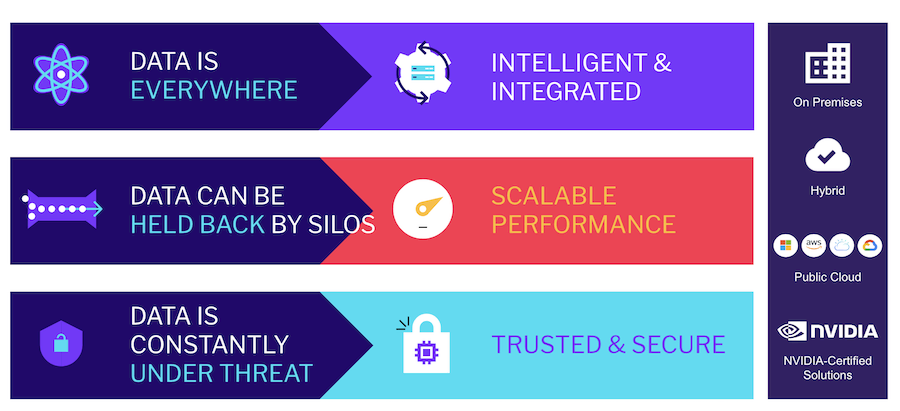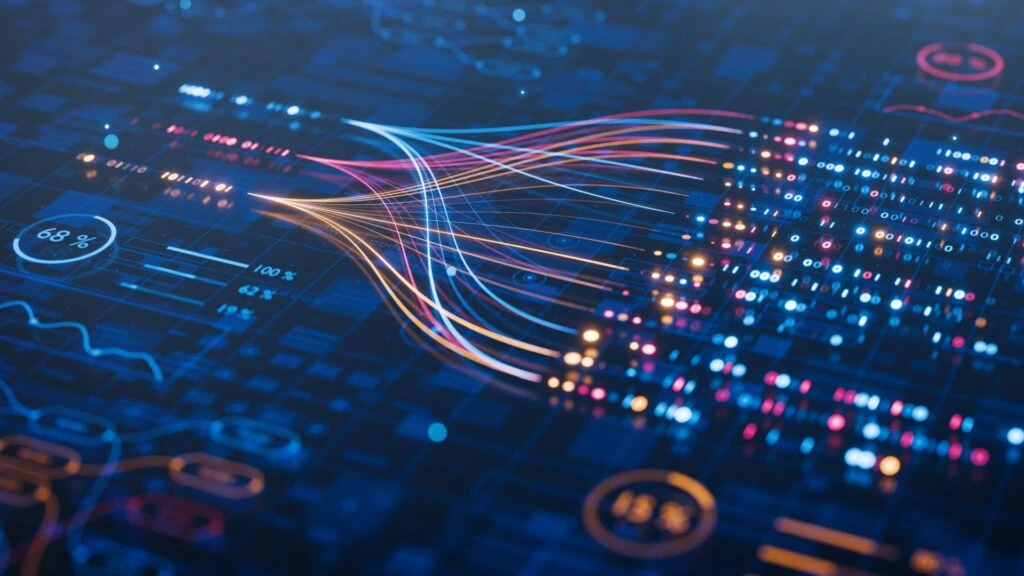What are the differences between big data, business intelligence and business analytics and how do I move from a sea of data to added data value in the company? Data intelligence plays a central role here, as it bridges the gap between pure data collection and intelligent, automated value creation.
The world of data analysis has changed dramatically in recent years. What once began as simple reporting has evolved into a complex ecosystem of intelligent analytics systems. Data intelligence represents the latest evolution in the handling of company data and goes far beyond traditional business intelligence (BI).
Data intelligence describes the ability to gain valuable insights from large amounts of data and use them intelligently. For example, a logistics company could use data intelligence to combine traffic patterns, weather conditions and historical delivery times to calculate optimal delivery routes in real time. The system continuously adapts and learns from each delivery to make future routes even more efficient.
Video: The evolution of data intelligence from “Tech in Asia”
Technological principles and their practical application
The technological basis represents a significant difference between the two concepts. Business intelligence traditionally uses structured databases and defined query languages. For example, a hotel chain might use a BI system to generate monthly reports on occupancy rates, average room rates and customer reviews. These reports follow a predefined schema and require human interpretation.
Data intelligence, on the other hand, relies on more modern technologies such as machine learning and artificial intelligence. The same hotel could use data intelligence to implement a system that analyzes booking patterns and automatically adjusts pricing. It could recognize that demand increases during certain weather conditions, public holidays or local events and increase room rates on its own. At the same time, it could generate personalized offers for regular guests based on their previous stay patterns.
The time horizon as a decisive differentiating feature
A fundamental difference lies in the temporal orientation of both approaches. Business intelligence typically looks back to draw conclusions from historical data. A retail company uses BI tools to determine which products were most profitable in the last quarter or which stores failed to meet sales targets. This retrospective analysis provides valuable insights, but requires additional interpretation to make forward-looking decisions.
Data intelligence, on the other hand, is inherently future-oriented. A manufacturing company could use data intelligence to predict machine failures before they occur. Instead of just reporting which machines have broken down in the past, the system analyzes operational data, vibrations and other sensor readings to identify patterns that indicate impending problems. Maintenance work can then be carried out preventively before costly production interruptions occur.
Degree of autonomy and human interaction
The degree of automation differs significantly between the two concepts. Business intelligence mainly serves as a support tool for human decision-makers. A marketing department uses BI dashboards to analyze campaign results and plan future campaigns on this basis. Humans, however, make the final decision based on the data presented.
Data intelligence, on the other hand, can act independently. An online advertising platform could implement a data intelligence system that not only analyzes the performance of different ads, but also automatically redistributes the advertising budget to the most effective channels. It could independently initiate A/B tests to test new ad variants and continuously refine the targeting. The system makes operational decisions autonomously and only informs human managers about key strategic issues or unusual patterns.
Data diversity and integration as a key factor
The type and variety of data processed is another significant difference. Business intelligence focuses predominantly on internal, structured company data. A bank might use BI tools to analyze transaction data, account balances and customer profiles to generate reports on customer profitability or product usage.
Data intelligence, on the other hand, effortlessly integrates a wide variety of data sources and formats. The same bank could also use data intelligence to incorporate external data such as economic indicators, social media sentiment, news feeds and even location data from customers’ cell phones. Through this comprehensive data integration, it could, for example, recognize that customers who read certain financial blogs are more likely to be interested in investment products and personalize offers accordingly.
Learning ability and adaptivity in practice
A key strength of data intelligence lies in its ability to learn continuously. While business intelligence systems create static reports according to predefined rules, data intelligence systems are constantly evolving. An e-commerce company with data intelligence could implement a recommendation system that not only learns from purchase histories, but also takes into account browsing behavior, time spent on product pages, seasonal trends and even color preferences. With each customer contact, the system refines its predictions and automatically adapts to new product categories or changing market conditions.
From data silos to networked knowledge
One aspect that is often overlooked is the different approach to data organization. Business intelligence traditionally operates in isolated data silos – separate systems for sales, finance, production and marketing analyze their data independently. An automotive manufacturer might maintain separate BI dashboards for production efficiency, sales figures and customer satisfaction, with the connections between these areas having to be made manually.

Data intelligence, on the other hand, breaks down these silos and creates a networked knowledge ecosystem. The same car manufacturer could use data intelligence to recognize how production parameters directly influence customer satisfaction. For example, the system could determine that vehicles produced on certain days of the week or at certain ambient temperatures require more frequent service appointments later on. These cross-departmental insights would be almost impossible to discover in traditional BI systems.
The future of data intelligence
The future of data intelligence will be shaped by several innovative trends that continue to expand its capabilities. Edge computing is already transforming the way data is processed – instead of analyzing everything in remote data centers, data processing is increasingly taking place at the point of origin. In autonomous vehicles, for example, decisions have to be made in milliseconds without waiting for data to be transferred to a central server. This decentralized intelligence enables completely new fields of application where speed is vital.
Another development is the ongoing democratization of data intelligence through low-code and no-code platforms. These enable employees without in-depth programming knowledge to carry out complex data analyses. For example, a sales employee could independently create customer segmentations or analyze sales trends without having to rely on the IT department. This spread of data skills leads to an organization-wide data culture in which decisions are made on the basis of data at all levels.



